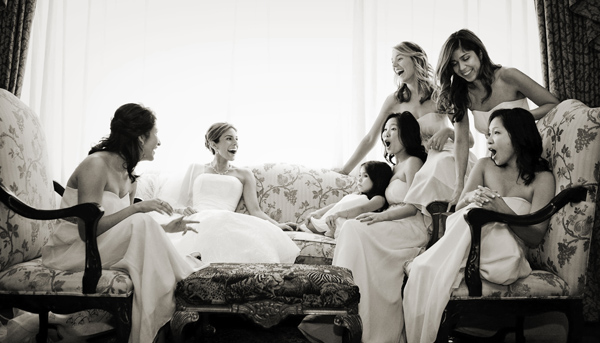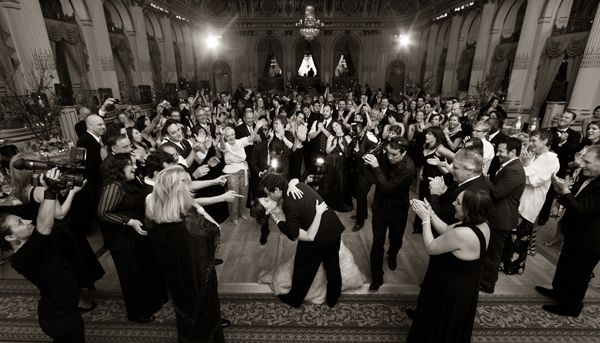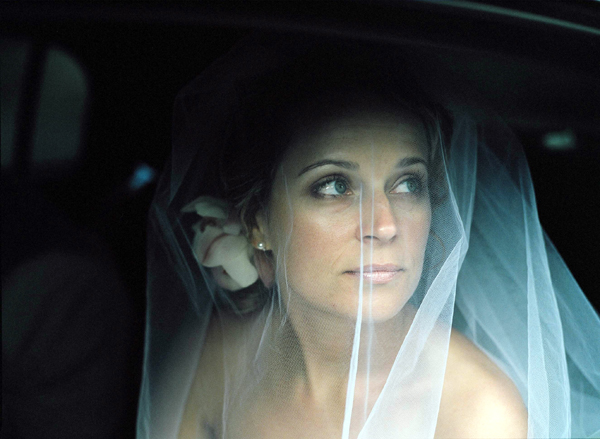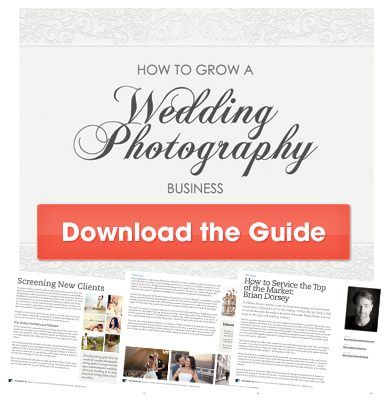Share
Top Wedding Photography Trends for 2013
It’s no secret that competition in the wedding photography industry has gotten fierce. More and more photographers are entering what has become a...

It’s no secret that competition in the wedding photography industry has gotten fierce. More and more photographers are entering what has become a very lucrative and growing market. On the flip side, there are also many couples who are willing to let their “photographer friends” shoot the big day.
So it goes without saying that building a competitive edge is key to finding success. To learn more about how the top wedding photography trends today, we talked to wedding photographers in our community who have been running successful businesses for years.
We covered the bases, too – everything from shooting style to client budgets to advertising. Here’s what they had to say:
Shooting style:
Nearly every photographer we talked to described their shooting style as some form of photojournalism: “fine-art photojournalism”, “photojournalistic style, balanced with family portraits and classic couple shots”, and “candid, documentary style photography with a touch of fashion and editorial” were just some of the ways they described their photography.
And while we still see a lot of it, photographers indicate that vintage-style is becoming just that – vintage. Couples want their big day documented just like any other newsworthy event, with a few setup shots of Aunt Mildred thrown in for good measure. “Ultimately, a wedding will always be a story of poignant moments, with a record that needs to be timeless,” says New York-based wedding photographer Brian Dorsey.
Hobbyists vs Pros:
The wedding photography market is an over-saturated one. More and more hobbyists turning full-time make it even more so. The competition is tough, but pros feel like this just pushes them to work harder and become the best of the best. Also, many pros aren’t necessarily seeking the type of client who’s just as happy having their DSLR-wielding friend take over.
“My advice is to work on finding your own particular niche,” says UK-based wedding photographer Lisa Devlin. “Too many photographers think that playing it safe is the way to go, but if you try to appeal to everyone, you will end up appealing to nobody in particular.”
In a similar vein, Chip Litherland of Eleven Weddings Photography says, “There are clients everywhere, it’s just a matter of finding the right ones.”
Prints & products:
The trend of 2013 on this front is professional, high-quality photo albums. Even in a time when most photographers are providing the bride and groom with downloadable image galleries or DVDs, clients want a physical reminder of the big day – and for someone else to do the hard work of creating it.
“I started including one book with each of my packages and feel like I’ve received more inquires from clients excited about a book!” says Betsi Ewing, who was recently voted into The Knot’s Best of Weddings for 2012. “I also love giving them to clients…it’s something they can hold to and share with others in such a special way. Much better than staring at your computer screen.”
NYC-based wedding photographer Missy McLamb agrees: “While some clients prefer to make their own prints and books, many clients still value the artistry and design abilities of the photographer.”
Client budgets:
Most of the photographers we talked to plan to raise their prices in 2013, even if in small increments. Professionals should work to continue developing their skills, and their prices need to reflect that. Despite the flagging economy, wedding photographers do not plan to lower their prices – they still strive to attract a certain type of clientele.
Fine-art wedding photographer Alexandra Tremaine says, “I’ve been very strict about keeping my rates and not lowering them so as not to attract the wrong client.”
One new trend we see is an increase in “a la carte” options, or add-on’s, that let the bride and groom customize their package. One wedding photographer sets aside $700 worth of prints and products, to be used however the client chooses. This gives clients the freedom to chose a much or as little as they want, while you still get the base amount.
Pricing structure:
The standard package for 2013 among these photographers is:
- Somewhere between 8-12 hours of shooting
- Second shooter/assistant
- Online photo gallery
- DVD of high res images
- Photo album
- Prints or option to order prints from the online gallery/DVD (i.e. the rights to print)
Common add-on’s are larger prints (11×14 in., for example), engagement shoot, photo booth, and “trash the dress” shoot. Interestingly, these photographers don’t usually offer canvas wrap prints – there just isn’t any interest from their clients.
Most photographers also believe that beautiful presentation is still important. Branded packages, chocolates, and hand-written thank-you notes are all examples of ways photographers are making their clients feel special. One photographer even suggests giving more prints than in the original agreement – it makes the bride and groom feel like you’ve gone above and beyond, and helps secure more referrals.
Advertising:
While word-of-mouth recommendations still rule the wedding photography industry, 2013 will likely see a continued increase in online advertising, particularly on wedding blogs. Betsi Ewing says that 80% of her business comes from advertising on The Knot. It seems that most photographers have stopped spending big bucks to exhibit at bridal shows, and print advertising has steadily declined in popularity.
“With online advertising, you can track and see the results – and it costs less,” says New England wedding photographer Matthew Cavanaugh. Here’s an idea for the new year: include a field in the contact form on your website that asks prospective clients where they found you (social media, blog, Google, referral, etc.) so you get a better idea of what’s working and what isn’t.
Social media marketing:
Facebook is the social media platform of choice among pros in 2013, followed by (relative) newcomer Pinterest and then Twitter. Wedding photographers love that they can “friend” their clients, then post a teaser gallery the next day and tag the bride and groom. It’s a surefire way to get them excited to see all the final images, and also get your work in front of their friends and family.
Pinterest has become more even more popular over the last year, as the audience is filled with potential brides. “I post a little of my own work, but it’s mostly from other people pinning my images,” says Lisa Devlin, who makes the work on her site “pinable”. “This is probably currently the best social media for wedding photographers – brides love it and they do all the work for you!”
But, by far the long-lasting cornerstone to every successful wedding photographer’s business is a blog. A personal blog is still the way to connect with your audience and get your work featured on bigger wedding blogs. It’s also the ideal platform for creating a narrative around your work, as well as giving people a sense for who you are and how you work. Connection is key to getting hired in the wedding industry.
Shooting video:
At least for now, most wedding photographers aren’t interested in offering video themselves. Most prefer that their clients hire a videographer separately. That said, some are considering adding a video professional to their team as business grows or outsourcing it on a per client basis.
Wedding photographers want to stick to what they know best. As Matthew Cavanaugh says, “If I tried to do both, I wouldn’t do either very well.”
For more information on wedding photography trends today, be sure to check out our free guide How To Grow A Wedding Photography Business . Hear firsthand from successful wedding photographers and learn how set your services apart from the pack.










